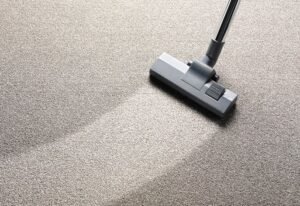Keeping our living spaces clean and tidy is essential to maintaining a healthy and comfortable environment. To achieve effective cleaning results, we often rely on various cleaning tools and products. One such tool that has become popular in recent years is the microfiber cloth. Microfiber wipers have revolutionized the way we clean, delivering superior cleaning power and efficiency. In this article, we explore the benefits of microfiber cloths and find out why they are considered an excellent cleaning tool.
The Power of Microfiber: A Material Understanding
Let’s first define microfibre before moving on to the advantages. Polyester and polyamide (sometimes known as nylon) are both synthetic materials used to create microfiber. The diameter of a microfiber fiber is often less than 1/100th that of a human hair. The distinctive qualities and cleaning power of microfiber cleaning cloths are due to these tiny filaments.
The Benefits of Microfiber Cleaning Cloths
1. Unmatched Absorbency: Soaking Up Spills and Moisture
Microfiber cloths are extremely absorbent, which is one of their best qualities. Microfibre has a huge surface area and can absorb and hold a big amount of liquid due to its microscopic strands. Microfiber towels absorb liquids rapidly and leave no stains or residue, whether you’re wiping moisture off windows or dealing with spills on the counter.
2. Say Goodbye to Residue and Fluff With Lint-Free Cleaning
Traditional cleaning cloths can leave lint and fibers behind them, which can be difficult when attempting to attain a pristine surface. Microfiber cleaning cloths, on the other hand, are lint-free due to their densely woven strands. This means you can clean objects with confidence without fear of leaving behind any undesirable residue or lint.
3. Cleaning Delicate Surfaces in a Gentle and Non-Abrasive Manner
When cleaning fragile surfaces such as glass, mirrors, or electronic screens, microfibre towels are the top choice. Because the fine microfiber fibers are gentle and non-abrasive, they can be used on delicate surfaces. Microfiber, as opposed to rougher materials like paper towels or normal cloths, will not scratch or harm delicate finishes, enabling streak-free and scratch-free cleaning.
4. Dusting Effectively: Capturing Dust and Allergens with Ease
Dusting can be a never-ending battle, particularly if you suffer from allergies or live in a dusty area. Microfibre cloths catch dust and allergens exceptionally well due to their electrostatic characteristics. The fine fibers attract and trap dust particles, pollen, pet hair, and other allergies, keeping your surfaces clean and the presence of airborne irritants to a minimum.
5. Environmentally Friendly: Cutting Down on Chemical Use and Waste
Microfiber cleaning cloths provide a sustainable cleaning solution in today’s society where environmental awareness is crucial. These cloths require few or no chemicals to clean properly. The peculiar structure of microfibre ensures that it catches and holds dirt and grime without the need of heavy detergent. Microfiber cloths help to create a healthier, more ecologically friendly cleaning routine by eliminating the usage of chemicals. Furthermore, microfiber cloths are reusable and durable, resulting in much less waste when compared to disposable alternatives.
6. Cleaning a Wide Range of Surfaces and Areas
Microfiber cloths may be utilized on a number of surfaces and locations since they are adaptable. Microfiber towels work well for cleaning everything from furniture to bathroom vanities, kitchen countertops, and even the cabin of your automobile. They are adaptable cleaning equipment for a variety of cleaning chores and are suitable for both wet and dry cleaning.
Choosing the Best Microfiber Cloth for Cleaning
1. Finding the Ideal Fit for Your Needs Using Size and Thickness
Cloths made of microfiber can be found in a variety of sizes and densities. Consider your cleaning requirements and the surface you will be cleaning before selecting the appropriate cloth. Larger rags are used for cleaning larger surfaces, whereas smaller ones are used for delicate and complex cleaning. Extra absorbency is provided by thicker cloths, which is perfect for difficult cleaning tasks.
2. Understanding the Different Types of Microfiber Cloths Through Weave and Pile
There are several weaves and pile heights of microfiber cleaning cloths. While the smooth weave works well for dusting and cleaning, the wafer weave is excellent for collecting moisture. The length of the fibers is referred to as the pile height, and longer piles are more absorbent. Understanding these variables will enable you to select the ideal cloth for your particular cleaning task.
3. Ensuring Longevity and Optimal Performance through Care and Maintenance
Your microfiber cloths must be properly maintained in order to be effective and last longer. To stop lint transfer, wash the microfiber item by itself or with other microfiber items. Bleaches and fabric softeners should be avoided because they can change the fibers’ characteristics. To avoid harming the fabric, it is advised to air dry or use a machine set to low heat.
4. Preventing Cross-Contamination and Promoting Hygiene via Color Coding
Cross-contamination can be avoided and hygiene requirements can be upheld by using color-coded microfiber towels. To stop germs from spreading from one surface to another, assign distinct colors to certain cleaning jobs or places. Use one hue, for instance, to clean the bathroom, and another, to clean the kitchen. A more hygienic cleaning process is made possible by this straightforward approach.
Guidelines for Using Microfiber Cloths:
To get the most use out of your microfiber cloths, use the proper method. Gently gliding the cloth over the surface will cause the fibers to pick up and hold dust as you remove it. Fold a moist cloth into quarters to generate more cleaning surfaces when cleaning. To remove dirt effectively, move the object in gentle circular or back and forth motions.
Conclusion:
There is a reason why microfiber towels have become a mainstay of contemporary cleaning procedures. They have shown to be an effective cleaning aid due to their superior water absorption, lint-free characteristics, adaptability, and environmental benefits. You may increase the effectiveness and efficiency of your cleaning routine by understanding the power of microfiber and selecting the appropriate wipes. Experience the impact microfibre cloths can make in maintaining a clean and healthy environment by including them in your cleaning supplies.
FAQs
1. Are microfiber cleaning cloths safe to use on all surfaces?
The majority of surfaces, including glass, mirrors, stainless steel, countertops, furniture, and electronic screens, are safe to use with microfiber cleaning cloths. To ensure compatibility and avoid any potential harm, it is usually a good idea to test the cloth on a tiny, discrete area before using it on fragile or sensitive surfaces.
2. How often should I wash microfiber cleaning cloths?
Depending on how often you use them and how much dirt or grime they gather, you should wash microfiber cleaning cloths more regularly. As a general rule, it is advised to wash microfiber cloths after each usage or when they are clearly dirty. Their cleaning effectiveness is maintained and their longevity is increased with regular washing.
3. Can I use microfiber cleaning cloths for outdoor cleaning tasks?
Yes, you may use microfiber cloths for cleaning outside as well. They work well to clean surfaces like patio furniture, automobile exteriors, and more of dirt, dust, and grime. However, keep in mind that due to the higher amount of dirt collection, outdoor cleaning may necessitate more frequent washing of the cloths.



